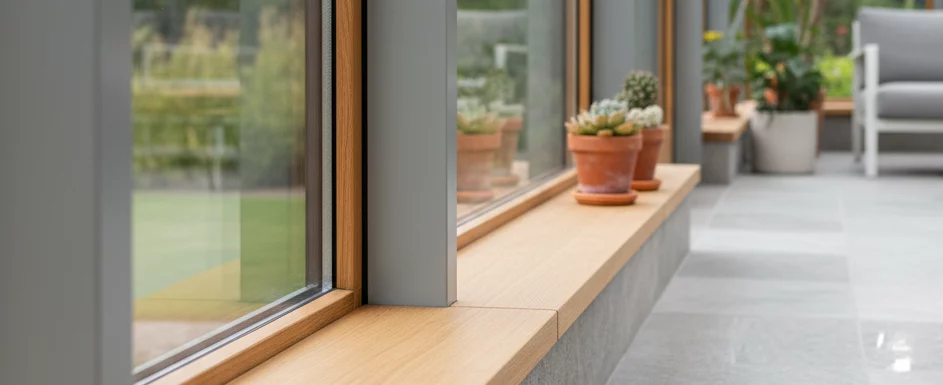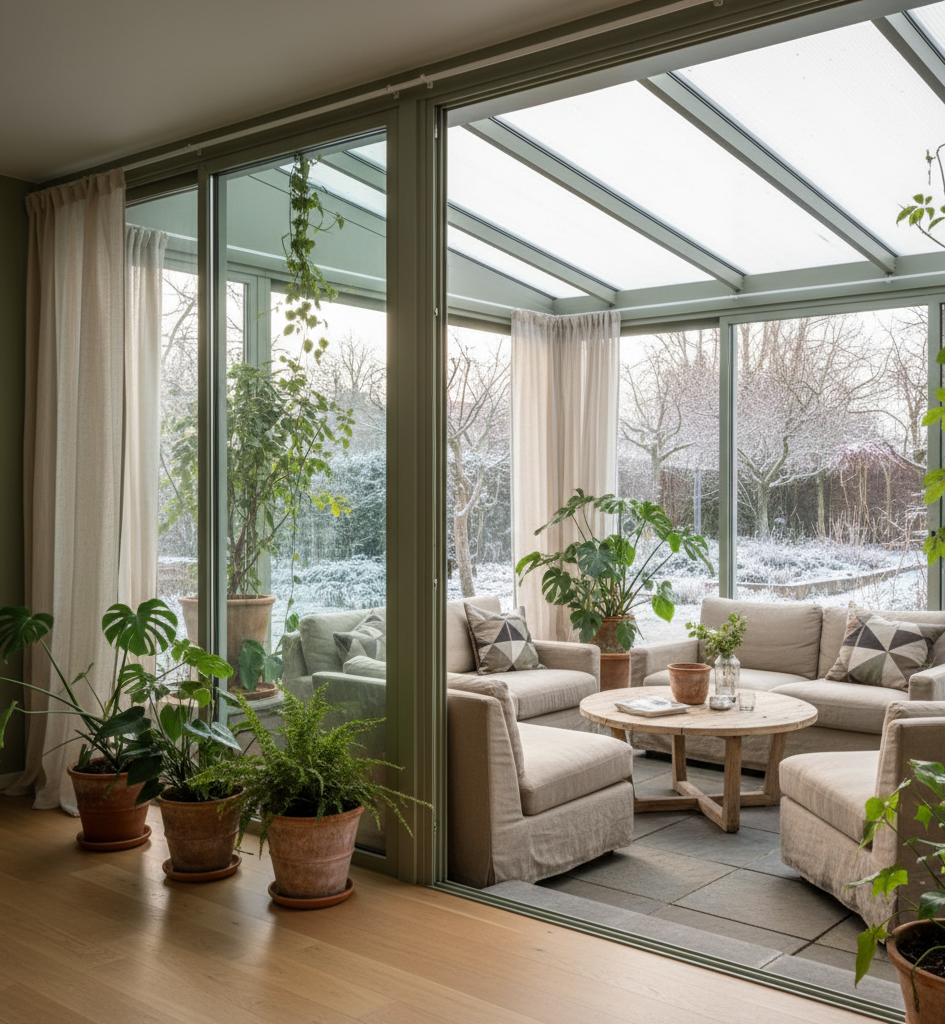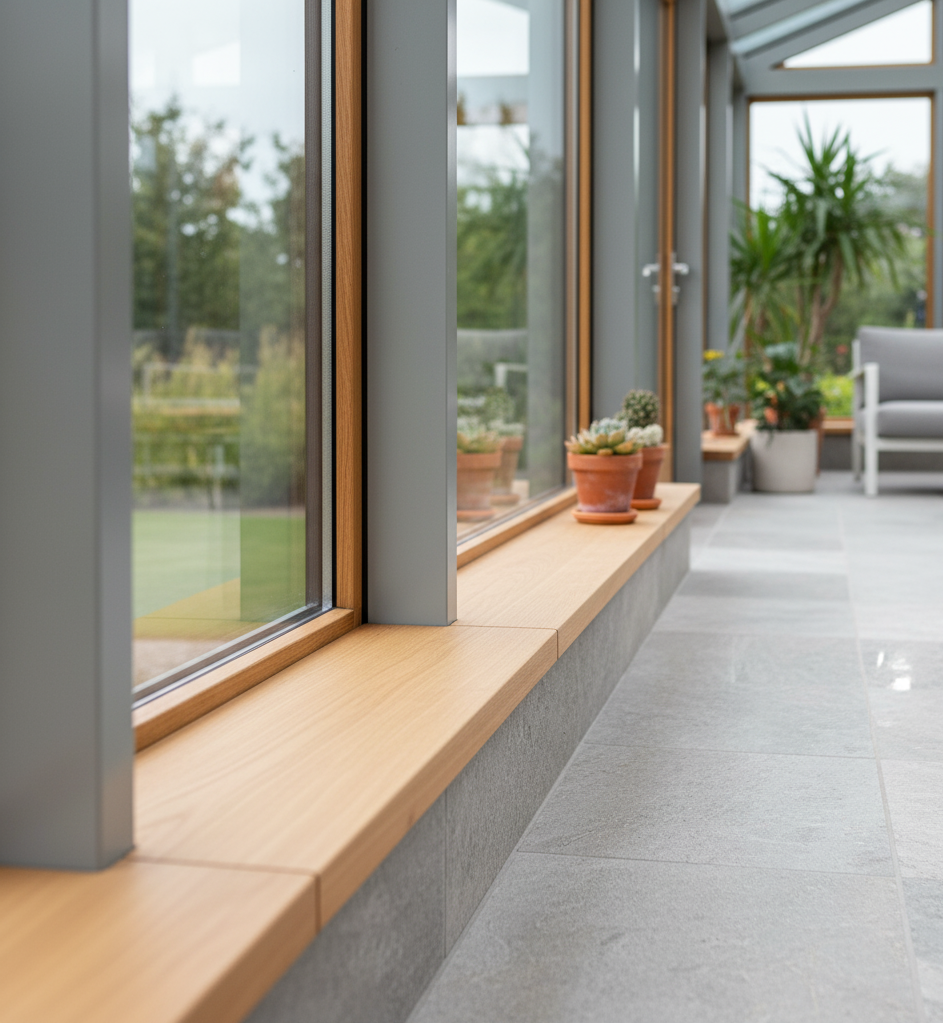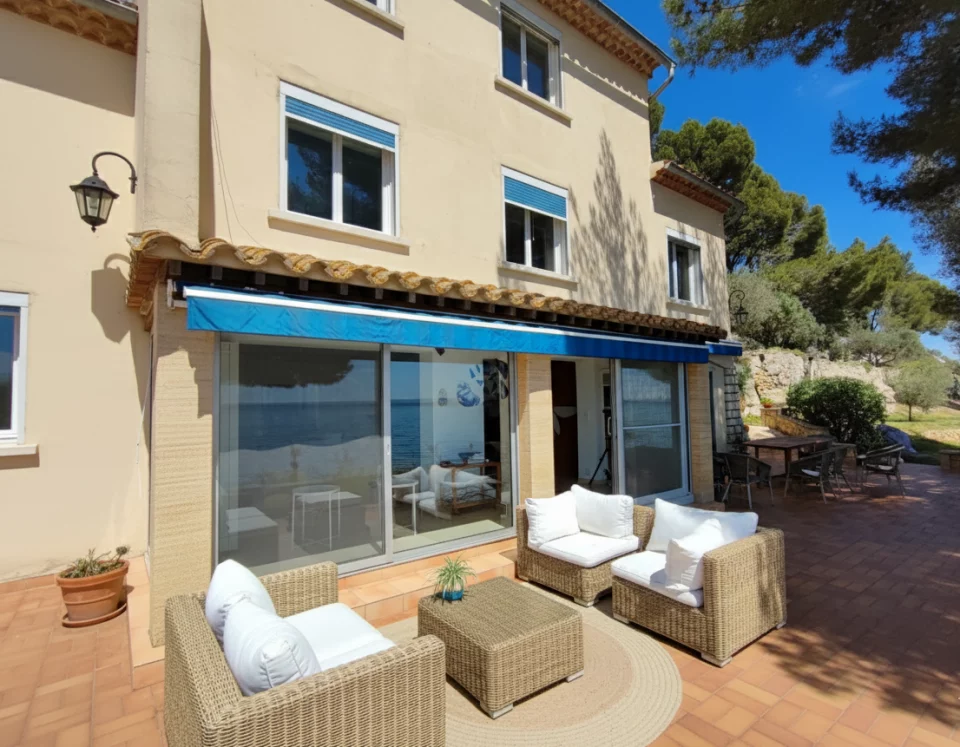
 A winter garden, indoor veranda, or sunroom — in short, it’s where the outdoors flows into the indoors . It’s the ultimate harmony between both spaces . Whether created within a veranda, a loggia, or even an entryway, its essence lies in being bright, well-ventilated, and serene at any time of day.
A winter garden, indoor veranda, or sunroom — in short, it’s where the outdoors flows into the indoors . It’s the ultimate harmony between both spaces . Whether created within a veranda, a loggia, or even an entryway, its essence lies in being bright, well-ventilated, and serene at any time of day.
Every plant can thrive in this fresh, luminous, and welcoming space. Pots, planters, and decorative containers naturally belong here. Many will recall Henri Salvador’s soft and timeless song, “In My Winter Garden,” which perfectly captures the calm atmosphere we wish to recreate in our interior. If your apartment renovation or home project could welcome such a space, we would be delighted to design it for you — contact us today!
Between indoors and outdoors: creating a soft and luminous transition
A winter garden is far more than a glass room — it’s a bridge between the house and the garden, where comfort meets natural light. Its design focuses on smooth circulation, visual continuity, and a calming atmosphere. By playing with transparency, light levels, and greenery, the result is a living, serene space that extends the seasons and offers a natural retreat year-round.
In one of our recent projects, the winter garden featured a contemporary anthracite aluminum structure paired with a traditional stone floor. The contrast between modern lines and natural materials, enhanced with subtle greenery, created a refined, warm, and open ambiance that embraced the surrounding landscape.

Glass walls, joinery, and finishes: choosing the right materials for lasting thermal comfort
The performance of a winter garden relies heavily on material quality. Aluminum frames with thermal breaks, natural wood joinery, and solar-control glazing ensure comfort in every season. Flooring options like light-colored stone, large-format tiles, or waterproof parquet contribute to heat regulation and overall well-being. Achieving balance between aesthetics and efficiency turns the space into a bright, enjoyable retreat — both in winter and summer.
Before starting construction, it’s crucial to check local zoning and building permissions. This prevents issues such as rejected permits, boundary encroachments, or noncompliance with local codes. Careful preparation ensures a feasible and compliant project that meets every expectation.

Plants that enhance a winter garden without demanding too much care
To create a genuine green sanctuary, certain indoor plants thrive perfectly in the bright conditions of a winter garden. Ferns, ficus, philodendrons, and potted citrus trees bring depth and color without requiring daily watering. Varying foliage and height adds visual rhythm and a greenhouse-like feel — easy to maintain and inviting every day.

Transforming an old veranda into a modern, livable winter garden
An existing veranda can easily evolve into a modern winter garden with a few smart upgrades: floor insulation, thermal blinds, thoughtful plant integration, and suitable furniture. The goal is to shift from a basic glass enclosure to a cozy, adaptable living space.
Glazing choice depends on orientation and climate. In cooler regions, thicker, high-performance glass — sometimes paired with a glazed roof — optimizes light and insulation. In warmer areas, fully glazed roofs should be avoided, as excessive heat can make the space uncomfortable. Instead, opt for solar-control glass, exterior shades, or adjustable sunbreakers for sustainable comfort.
The growing trend is to open the connection between home and veranda, creating a true indoor-outdoor living area. This transitional zone becomes a bright, versatile space that connects seamlessly with the garden, while privacy can be maintained with visual screens or plants depending on proximity to neighbors.

A living space where nature, comfort, and architecture meet
Today, a winter garden is no longer just a glass addition but a true extension of the home. Designed as a living environment, it brings together contemporary architecture, biophilic design, and everyday comfort. With efficient structure, natural materials, and well-chosen greenery, it becomes a full-fledged room that evolves gracefully through the seasons.
Whether newly built or transformed from an existing veranda, the success lies in balancing light, insulation, and privacy. When designed thoughtfully, a winter garden connects indoor and outdoor life in a harmonious, inspiring way — a space where the home breathes in rhythm with nature.
FAQ : design and renovation of a winter garden
How can I properly insulate a winter garden for year-round comfort?
Good insulation depends on three main factors: glazing quality, airtightness, and flooring. Double or triple solar-control glazing combined with thermally broken aluminum frames ensures consistent comfort. Insulated flooring with proper underlayment helps prevent heat loss and cold drafts.
What is the best orientation for a bright, comfortable winter garden?
A southeast orientation captures morning light without overheating in the afternoon. North-facing spaces benefit from high-performance glass and light colors. In southern climates, avoid fully glazed roofs — instead, choose insulated roofs and adjustable sun protection for optimal comfort.
Which plants are best for an easy-to-maintain winter garden?
Moderate tropical species such as ficus, kentia, calathea, or philodendron thrive in bright, indirect light. You can also add potted citrus trees, succulents, or ferns to vary texture and volume while keeping maintenance minimal.
Can an old veranda be transformed into a livable, modern winter garden?
Yes, with improved insulation, updated glazing, and a comfortable floor. By optimizing ventilation, adding thermal blinds, and integrating greenery, a simple glass veranda can become a welcoming, livable indoor-outdoor space for all seasons.
